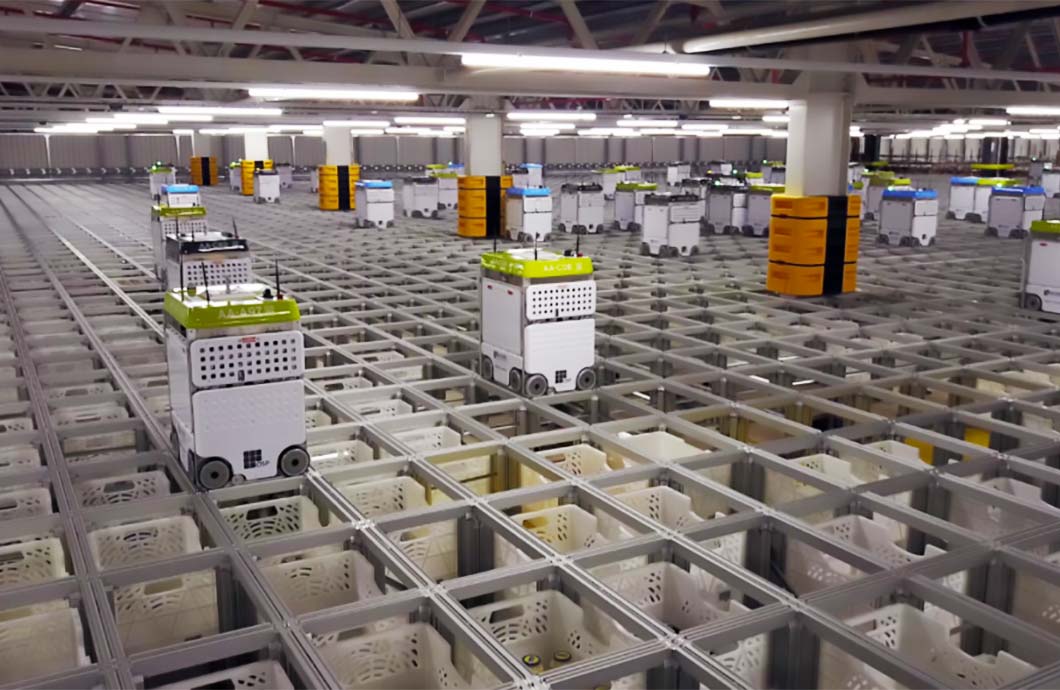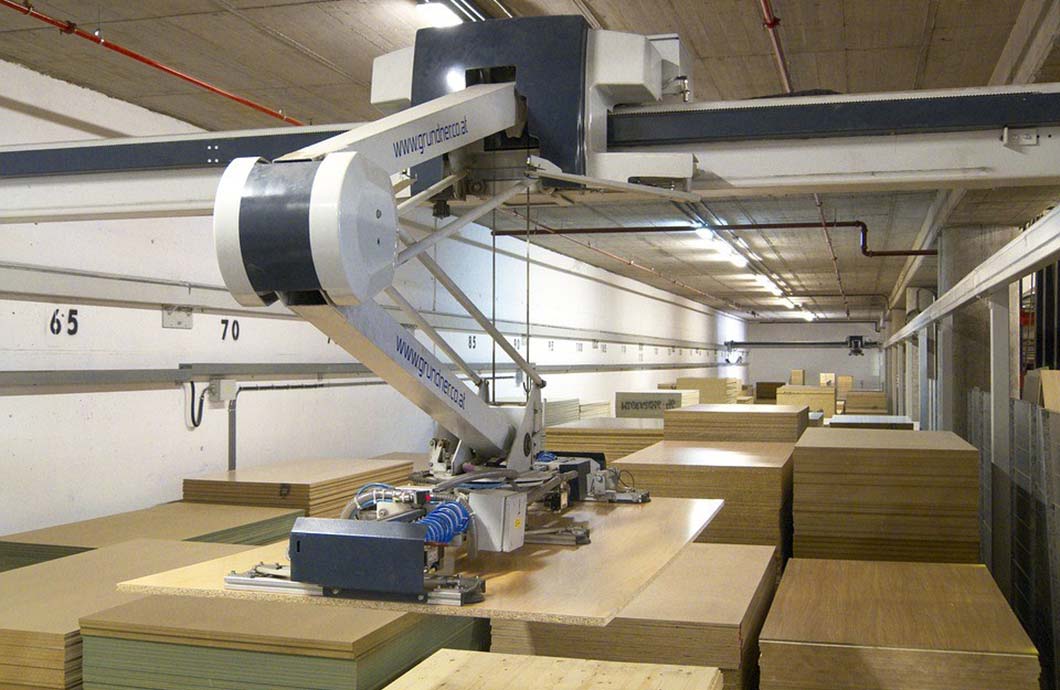
Typical warehouse equipment like telehandlers, order pickers and forklifts could be replaced by warehouse robots sometime in the future, experts say. The official term is called “warehouse automation solutions”, but are we ready for a robotic warehouse to become the norm, can all businesses successfully make the switch, and what does this mean for the average warehouse worker?
1.) Warehouse Robots are Spreading
Companies like Alibaba and Amazon are adopting warehouse automation fast. With
over 100,000 warehouse robots as of 2017, Amazon has devised a hybrid technique where human employees and robots share tasks. Human workers still pick and pack orders for the most part, but now robots do most of the heavy lifting.

Amazon uses a robotic arm similar to this one to stack heavy bins on pallets – a job once for humans.
Other companies, like the British online grocer Ocado, are already using far more advanced automated warehouse solutions. Their unpiloted warehouse robots utilize self-learning software to zip along grids and fill orders at high speeds, processing over 1.7 million items a day – all while intelligently storing produce, pharmaceuticals, and countless other items at the right temperatures. At Ocado distribution centers, the only job humans have is bagging the order at the very end.
Mega-warehouses Asda and Sainsbury’s (both owned by Walmart, the latter being the second largest supermarket chain in the UK) have also implemented automated warehouse solutions of their own. However, Sainsbury’s once experienced a £39 million dollar loss ($52 million – their worst year on record) after a failed robotic warehouse experiment in 2004 where the equipment would often incorrectly read barcodes and had other programming issues.
Though improvements have been made since, it just goes to show that automated warehouse solutions are not foolproof. Furthermore, it’s a clear instance where using traditional low-tech material handling equipment would have saved millions.
2.) Warehouse Robots Require Less Space
Without large equipment like forklifts and order pickers, shelves can be pushed even closer together and, in some cases, aisles can even be eliminated entirely. This in turn allows more space for inventory. Watch some of the videos at the end of our article to see just what we mean.
3.) Automated Warehouse Solutions Are Available for Rent
Ocado will rent out their robotic infrastructure and expertise to other companies in exchange for a sizeable fee. On the flip side, if a business wants to start an automated warehouse on their own, then they will need over £225 million ($304 million) and have to wait up to 4 years for construction to be completed. Since this is a massive undertaking for a single warehouse, most companies will probably be sticking with traditional material handling equipment in the foreseeable future (at least until the price comes down).
The Future of Forklifts, Telehandlers and other Warehouse Equipment
With major players like Amazon, Alibaba, and Walmart investing in and testing warehouse robotics, the future appears to be more automation and less people. How do you feel about automated warehousing in general, and are you concerned with losing your job to a robot? Leave us your thoughts on Facebook.
The following video by
WIRED is a look inside Ocado's distribution warehouse:
The following video is a look into Alibaba's distribution warehouse, also armed by robots: